- Books Name
- Class-8 Science Book
- Publication
- PathSet Publications
- Course
- CBSE Class 8
- Subject
- Science
The Moon
Introduction
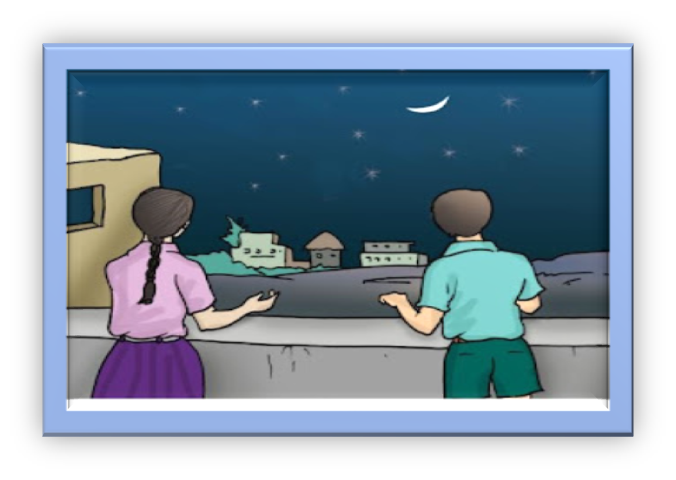
The moon is the brightest object in the night sky.
All-natural objects like the stars, the planets, the moon and many other objects in the sky are celestial objects.
1) Celestial Objects: Planets, stars, moon and other objects in the sky are called celestial objects.
2) Astronomy: The study of celestial objects and related phenomena is called astronomy.
Celestial Objects:-
The stars, the planets, moons and many other objects which are present in the sky are known as Celestial Objects.
All the objects outside the Earth’s atmosphere are collectively referred to as celestial bodies.
The sun and other stars in the sky appear to rise in the east and set in the west because the earth
rotates about its axis from west to east. All nine celestial bodies of the solar system shine due to
the light they reflect from the sun.
Celestial Bodies
- The Universe includes all the stars, planets and galaxies and its size is unknown.
- However, there is a spherical region of the universe that can be observed from the Earth which is called the Observable Universe.
- This Observable Universe comprises different physical objects that occur naturally on their own. These objects are called celestial objects.
- For example, the sun, the moon, the stars and the planets in our solar system all are called celestial objects.
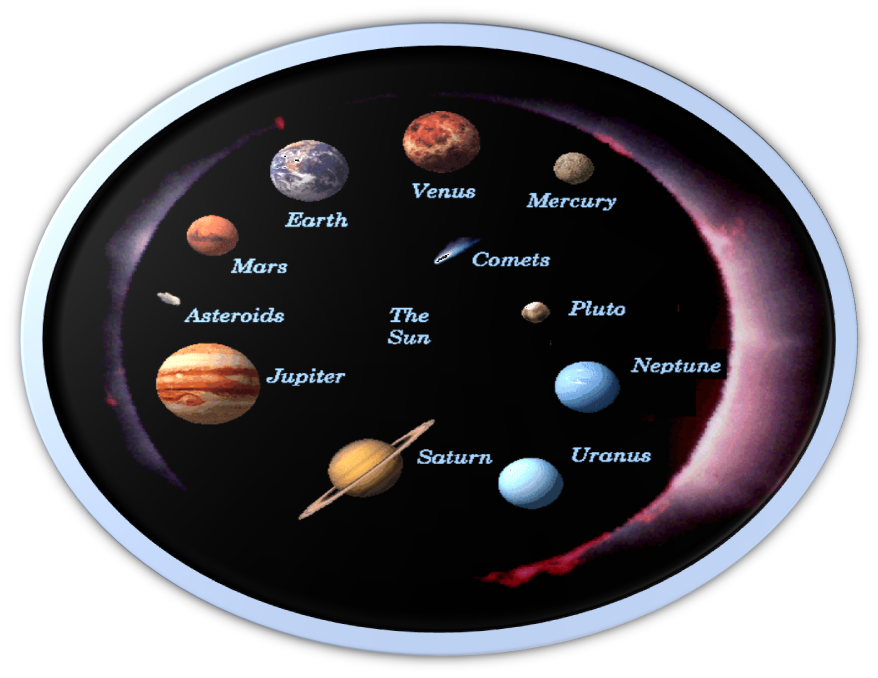
Astronomy
- Astronomy is the study of celestial objects and the phenomena associated with them. It is said to be one of the oldest Sciences in the world.
- It is associated with the study of the evolution of the universe, the motion of the celestial objects and their formation.
- In ancient times astronomers used to study the sky and observe the changes in it at night time. With these methodological observations, they used to devise calendars.
- They also help in predicting the climate of a place and the rainfall patterns.
- These interpretations are used to help the farmers in choosing the right crops for a certain season and in finding the right time to sow the seeds.
- Their interpretations also help in deciding various festivals in India and the occurrence of seasons.
- Nowadays, there are computers that help in methodological observations of the sky.
The Moon
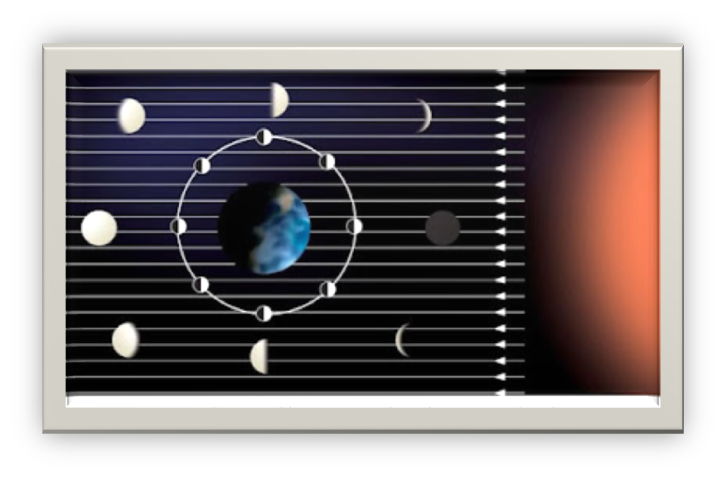
→ The various shapes of the bright part of the moon as seen during a month are called phases of the moon.
• New Moon day → when the moon is not visible
• Full Moon day → when the full moon is visible
→ The gap between consecutive new moon day and full moon day is of 15 days.
→ The rotational period and revolution period of the moon is the same (almost 29 days).
Moon’s surface
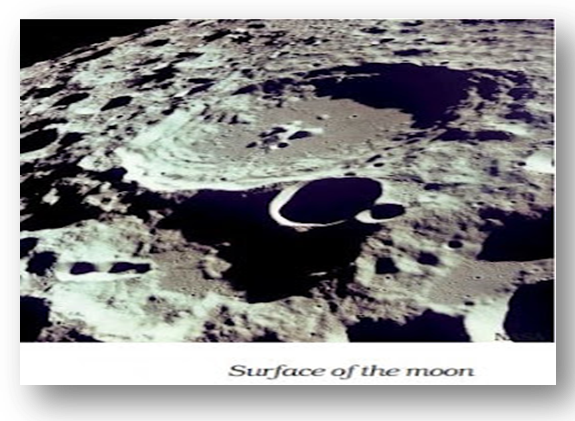
→ Because of the lack of atmosphere, one cannot hear any sound on the moon.
- We know that the moon is a natural satellite of the earth that revolves around the earth in a fixed orbit.
- Just like the earth other planets of the solar system also have their own moons or natural satellites.
- Also, the moon does not emit any light of its own but it reflects the light of the sun that falls on it.
- However, as the moon revolves around the earth the part of the Moon that faces the sun gets to light up while the other part remains in dark.
- This results in different shapes of the moon in the sky.
- These shapes of the lit part of the Moon are called the ‘Phases of the Moon’.
The Phases of the Moon
- The phases of the moon repeat themselves after every 29 days and there are eight major moon phases.
- The day when we can see the whole moon in the sky is called a ‘Full Moon Day’. On this day this sunlight falls all over the moon.
- Now as the moon revolves and changes its position, the part which receives sunlight starts to decrease and the moon appears as if it is getting thinner.
- On the 15th day after a Full Moon, the moon becomes completely invisible as no light of the sun falls over it due to its position behind the Earth. This is called a ‘New Moon Day’.
- The next day the moon that appears in the sky is called ‘Crescent Moon’.
- From this day, the moon starts growing larger until the 15th day when it reaches its full shape, that is, the Full Moon Day comes.
- Waning Phase of the moon: it is the phase of the Moon in which it decreases in size.
- Waxing Phase of the moon: it is the phase of the moon in which it increases in size.
Blue moon – Generally there occurs one New Moon every month. However, at times, there can be two new moons in a single month. The second New Moon in a month is called the Blue Moon.
The phases of the Moon hold an importance in the Indian society and culture as different festivals in India are celebrated depending upon the Phases of the Moon.
Phases of the Moon
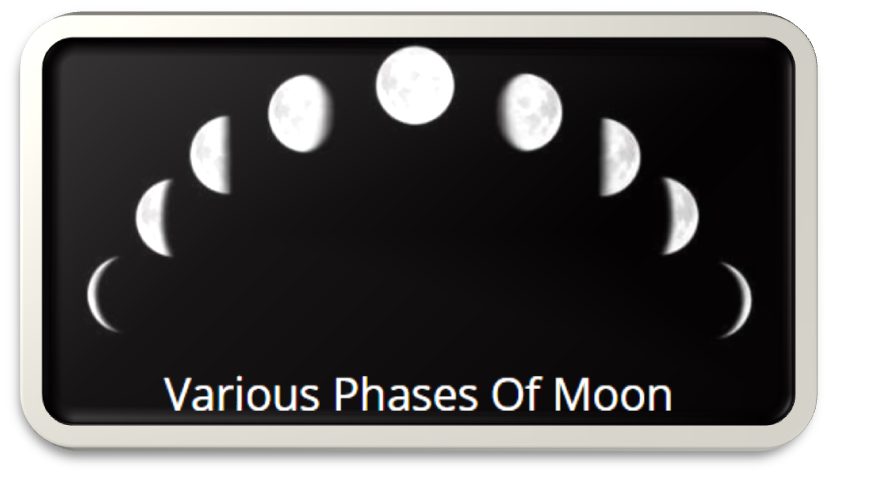
- We always see the same side of the Moon because the Moon completes one rotation on its axis at the same time as it takes to complete one revolution around the earth.
- Phases of the Moon can be defined as the different shapes or appearance of the visible part of the Moon as seen from the Earth.
- The phases of the moon occur due to its continuously changing positions with respect to the Earth and the Sun.
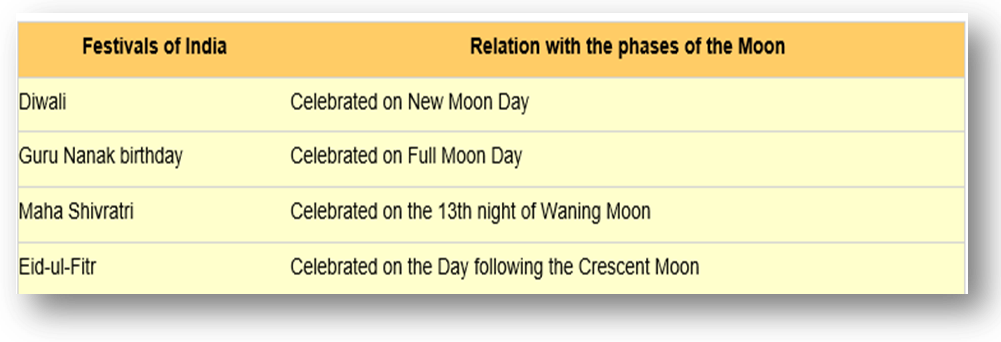
The Surface of the Moon
- The surface of the Moon is barren and all covered with dust.
- There are Craters or bowl-shaped cavities present on the surface of the Moon.
- There are steep and high mountains present in huge numbers on the Moon.
- Some of the mountains are as high as the highest mountains found on the earth.
- There is no presence of water and atmosphere on the moon.
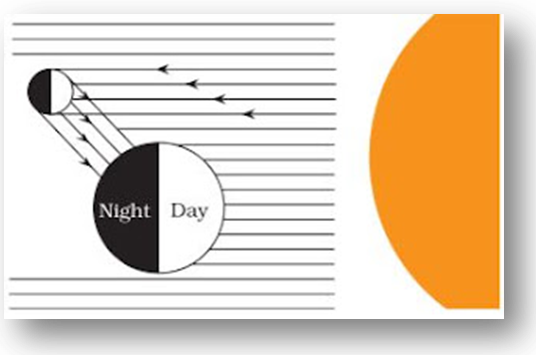
→ Moon is visible due to reflected sunlight
Can we hear sound on the Moon?
There is no atmosphere on the Moon that is, no gases are present on the Moon that could act as a medium for the propagation of sound. Hence, the astronauts of the Moon cannot hear each other.
They generally use signs or microphones to communicate with each other.
Who was the first Astronaut to land on the Moon?
Neil Armstrong was the first person to land on the moon followed by another Astronaut Edwin Aldrin. Neil Armstrong landed on the moon on July 21, 1969.
What is a Lunar Eclipse?
- The lunar eclipse occurs when the moon, the Earth and the Sun are very closely aligned with each other and the earth is present exactly in the middle of the moon and the sun.
- Hence, the shadow of the earth falls upon the moon.
- Therefore during the lunar eclipse, the moon does not reflect the light of the sun but the light that it receives from the earth.
- As a result, the moon appears reddish in colour during a lunar eclipse.
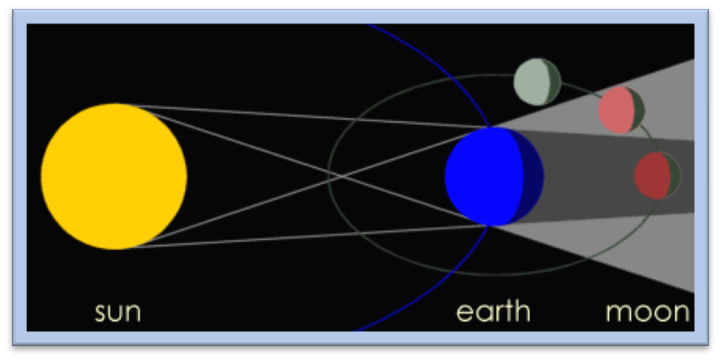

 PathSet Publications
PathSet Publications
